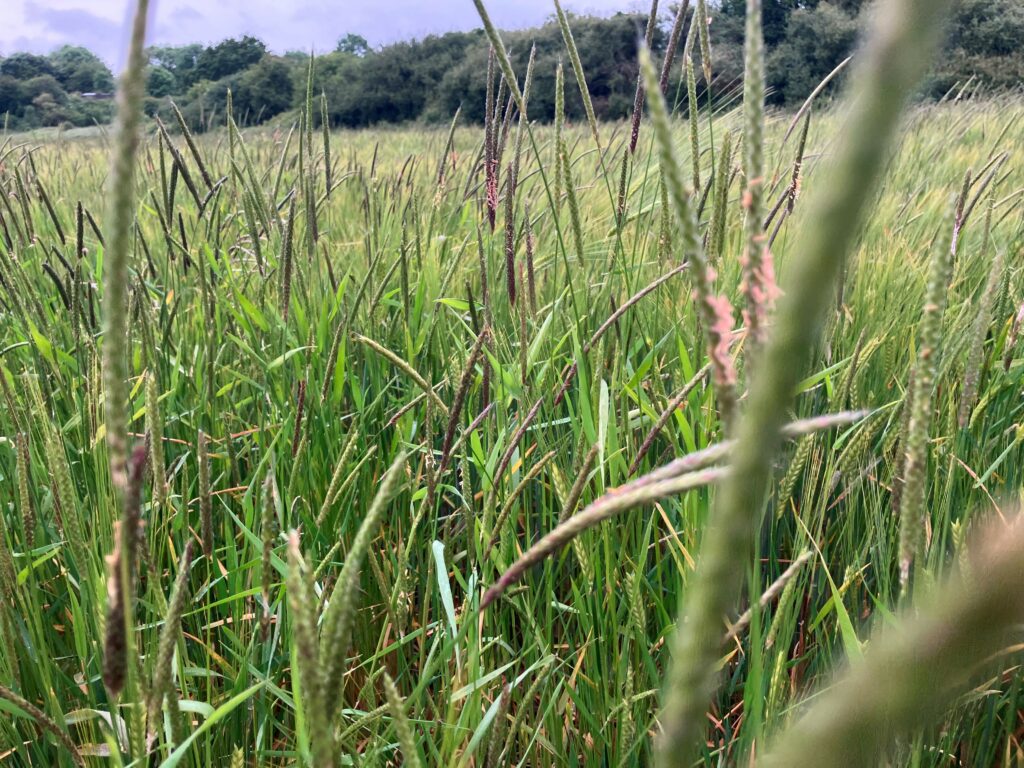Slender Foxtail has put in its annual appearance with great vengeance this year. It’s that time of year where we all can see the results of each other labour’s. With wheat now out in ear, fields that are normally clean are showing the effects of the long & wet winter. Grass weeds are out in force, particularly Slender Foxtail AKA Blackgrass. The lack of herbicide activity and lack of conditions to get the applications on in a timely manner are showing. No doubt the mild wet autumn also played a part in reducing the longevity of herbicides.
What are the options now when looking at crops with significant weed burden? An integrated or wholistic approach of many differing techniques is required to stay on top of grass weeds. Below are some of the options:
Limit the seed return
Spray the crop and the grassweeds off before they set viable seed. For many this maybe the go to option. The first loss is always the cheapest, particularly if spring cropping or ploughing doesn’t appeal. By the time this article is published spraying off will be too late, certainly for blackgrass control.
Cultural controls
Ploughing is a definite option if it has not been done for a number of years. A minimum of 3 years seems to be the minimum required for any significant effect. Research shows that the longer the seed is buried the greater the decay in seed numbers. If blackgrass seed has been recently ploughed down, some of it will be brought back to a germination depth again. In my experience ploughing for weed control requires the correct plough and skilled operator to achieve the best results. Simply turning the field brown is not enough. The plough and the skims have to be correctly set in order to put the trash at the bottom of the furrow and the furrow slice completely inverted to cover the trash. Simply standing the furrow slice on its edge, or ploughing too fast and throwing the soil onto the top of the preceding furrow slice, is an expensive recipe for disappointment.
Rotation change and spring cropping
Double spring breaks are the ‘nuclear option’ as my splendid colleague has been heard to say, many times! If you want to upset blackgrass take it out of its comfort zone. Change its environment. We have allowed the weed to become attuned to autumn cultivations and spring nitrogen. An environment it has clearly made the most of. Turn to spring cropping to start with. Preferably with a non-cereal crop, if you can find one which has reliance on different herbicide chemistry and make a margin. Options are limited though. And drill it as late in the spring as you dare without moving the soil too much.
The same is true for autumn sown crops. With the push for later drilling we are clearly selecting seed which wants to germinate later. However a move to earlier drilling is unlikely to help here.
Change the environment further
We find catch and cover crops particular good for smothering, mulching and shading the seed, which seem to deter the blackgrass from germinating. Mulching is a technique used by good effect by gardeners and by drilling through cover we are effectively replicating that technique.
Taking it a step further…
Blackgrass clearly has an affinity for heavier textured soils. Maybe because heavier textured soils are more moisture retentive. Blackgrass seems to be able to germinate in low oxygen situations. Consider looking at the calcium and magnesium balance within the soil which may help to increase the porosity of the soil and consequently improve drainage and gas exchange. By using techniques that increase the carbon content of the soil will also help improve the structure and porosity.
Within no-tillage systems combining all these elements, with the obvious exception of the ploughing, leads to a decline in blackgrass levels. However, the wet autumn and winter has challenged us, and the system. Certainly, blackgrass levels are higher in some areas than we’d like to see, but we are confident this is just a blip.

